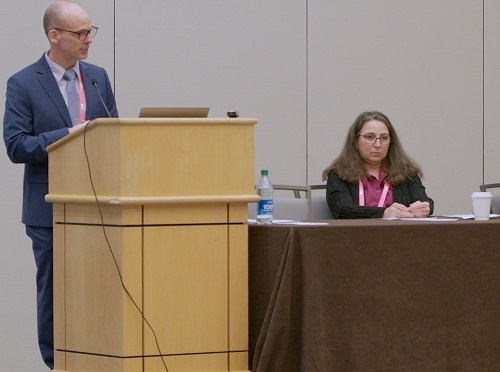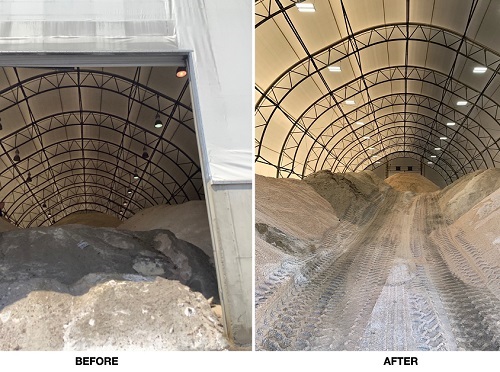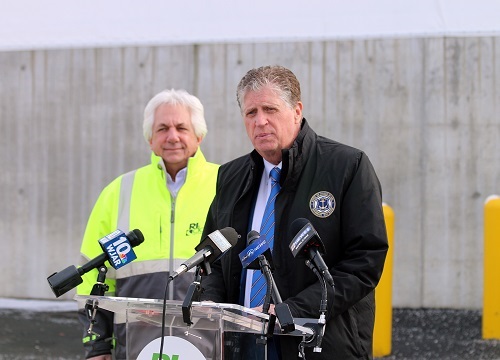FEDERAL ACTION
Biden Touts Infrastructure in State-of-the-Union Speech – AASHTO Journal
Mobility Study Cites Roadblocks for U.S. Electric Vehicles, Sustainable Aviation – Reuters
State and Local Governments Face Persistent Infrastructure Investment Challenges – Pew
White House unveils plan to boost use of U.S.-made goods in infrastructure – Reuters
Republican Policymakers Spotlight Autonomous Vehicles’ Benefits – Transport Topics
INFRASTRUCTURE RESILIENCE AND SUSTAINABILITY
How Hawaii DOT Plans for Resilience – AASHTO Journal (podcast)
Electric Vehicle Charging Networks Trend Toward Convenience – Government Technology
Kansas Lawmakers Want To Tax Public EV Charging – Green Car Reports
Planned EV fees aim to replace Vt. gas tax revenue – WCAX-TV
Nebraska DOT seeking information for electric vehicle charging network – KETV-TV
AIR QUALITY
Colorado Emissions Reduction Plan Ties Sustainable Transportation to State Funding – Planetizen
FHWA to Start Funding Program to Lower Truck Emissions at Ports – Transport Topics
Here’s how lawmakers want to fix Utah’s terrible air quality – Salt Lake Tribune
$150m public health benefit from electrification of Port of New York and New Jersey – Seatrade Maritime News
Five Powerhouse Climate Policies Can Rapidly Slash Emissions And Strengthen The Economy In Any State – Energy Innovation: Policy and Technology (Commentary)
ENVIRONMENTAL JUSTICE
FTA Funding Research into ‘Transportation Insecurity’ – AASHTO Journal
IATA: Airline Passengers With Disabilities Should Travel With Dignity – eTurboNews
Kalamazoo, Holland, other cities to make rail stations ADA compliant after settlement – MLive
NATURAL RESOURCES
‘Slow down’: Colorado mountain residents concerned over wildlife deaths caused by trains – KMGH-TV
‘A national scandal’: how US climate funding could make water pollution worse – The Guardian
CULTURAL RESOURCES
Google Maps is getting this new ‘immersive’ view. Here’s why it might be useful – ZDNET
How The Los Angeles Crosswalk Collective Is Trying To Make Streets Safer … Their Own Way – LAist
HEALTH AND HUMAN ENVIRONMENT/ACTIVE TRANSPORTATION
Just two hours spent in traffic fumes impairs brain function – Sustainability Times
Researchers find a link between traffic noise and tinnitus – University of Southern Denmark
Richardson, Texas looking to add 54 miles of bike trails for new transportation network – Community Impact
A tale of trails: Colorado bike riders, advocates consider options for getting around – Fort Lupton Press
Efficiency Maine may add electric bikes to its rebate program – Sun Journal
How E-Bike Rebates Will Make Cycling Safer – CityLab
A call for integrating active transportation into physical activity and sedentary behaviour guidelines – The Lancet (Commentary)
TRB RESOURCES/ANNOUNCEMENTS
Planning and Environment Linkages: Review of Statutory Authority and Case Law – NCHRP
Strategies to Reduce Highway Traffic Noise – TRB (webinar)
FEDERAL REGISTER NOTICES
Guidance for Grants and Agreements – OMB (Proposed rule; notification of proposed guidance)
Major Disaster Declarations and Related Determinations: Expiration of COVID–19-Related Measures – FEMA (Notice)
Notice of Intent To Prepare a Joint Draft Environmental Impact Statement/ Environmental Impact Report for the Proposed Searsville Watershed Restoration Project, Santa Clara and San Mateo Counties, CA – Army Corps of Engineers (Notice)
Air Plan Approval; NC; Transportation Conformity – EPA (Proposed rule)
Proposed Consent Decree, Clean Air Act Citizen Suit – EPA (Notice; request for public comment)
Moore County Solar Environmental Impact Statement – TVA (Record of decision)
Notice of Meeting of the National Parks Overflights Advisory Group – FAA (Notice)
Notice of Joint and Individual Colorado Resource Advisory Council Meetings – Bureau of Land Management (Notice)



